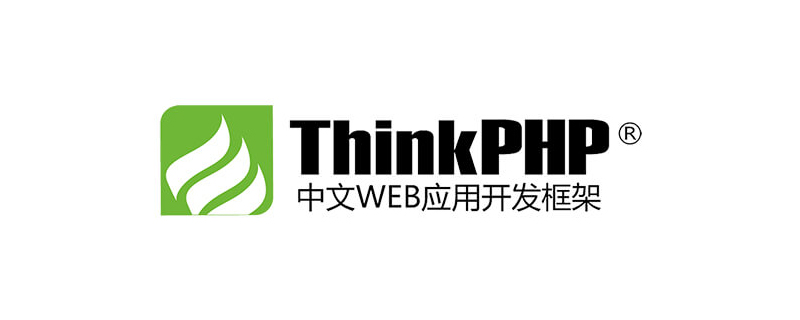1. Setting up the operating environment
System: Windows7 Ultimate 64-bit
PHP environment: wampserver2.2e-php5.4.3-httpd2.2.22-mysql5.5.24 32-bit version
Download address: http://www.jb51.net/softs/161568.html
ThinkPHP: 3.2.3 official version
Download address: http://thinkphp.cn/down.html
Oracle: Orcale_11gR2 32-bit version
Download address: http://www.oracle.com/technetwork/cn/indexes/downloads/index.html
Database operation tool: PLSQL Developer 32-bit
Download address: http://www.jb51.net/softs/63962.html
Development tools: NetBeans IDE 7.1.2
Download address: http://www.jb51.net/softs/18343.html
Note: I repeatedly emphasize the "bit" of the software here because it is very important. Generally, our system is 64-bit, so it is best to use 64-bit software, but except for the system, all There is a reason for choosing 32-bit, which is to work with PLSQL Developer and WAMP's PHP extensions. Because PLSQL Developer does not have a 64-bit version. Some friends say that you can use a 64-bit Oracle database and install a 32-bit client. I don't want to do this. If you don't like my way of operation, you can avoid it. Of course, if you do not use PLSQL Developer, but choose to use Oracle's own SQL Developer, then it is up to you to install 64-bit or 32-bit. PHP needs to open the corresponding extension to connect to the Oracle database. This extension also requires the support of the database client, because the PHP extension also needs to correspond to the number of bits of the database client. End of verbosity.
2. Environment configuration
1. I won’t talk about the installation of the operating system. Oracle installation can be solved by yourself, and NetBeans IDE 7.1.2 can also be solved by yourself.
2. I won’t talk about the installation of Wamp. If you don’t know how, just start learning again from DOS.
3. WAMP will define the PHP web page folder in www under the folder where wamp is installed. I installed it on the D drive, so it is D:WAMPwww. We will not make other custom modifications for the time being. Start wamp. If the system tray icon is green, it means the startup is OK.

4. Open localhost and see the following interface, which means that the environment configuration is basically OK. Why is it basic? Because the Oracle configuration has not been set yet.

5. Open the PHP extension menu as shown in the picture. On the green icon, left-click ->PHP->PHP Extension, click on the extension of php-oci8. At this time, the WAMP will restart and wait for it to turn green after restarting. It means OK.

6. Open the localhost page again. If you find the display shown in Figure 4, it means that PHP currently supports Oracle.

Note that the wamp and oracle clients I am using are both 32-bit. If one of them is 64-bit, then the oci extension cannot be opened, and there is no oci8 display on the automatic environment monitoring page. On the premise of not using PL/SQL, it must be a combination of 32-bit Oracle and 32-bit WAMP, or a combination of 64-bit Oracle and 64-bit WAMP. Otherwise, please avoid it.
3. ThinkPHP configuration
1. Unzip the downloaded 3.0 official version. You only need the ThinkPHP folder in the project, which is the core.
2. Use the IDE to create a new project. The project folder is the www folder under Wamp just now. If you need to customize other folders, you need to modify the apache configuration file. I will not modify it here.
3. Copy the Thinkphp folder to the project folder, create a new php file, and name it index.php.
4. These files are already displayed in the IDE. Open index.php and write the following content:
<?php
define('APP_DEBUG', true);
require './ThinkPHP/ThinkPHP.php';
5. Open localhost/project name/index.php in the browser, and Thinkphp will generate relevant files and folders for you.
6. Operate the configuration file and find: config.php file in the Conf folder, modify it as follows:
<?php return array( 'DB_TYPE' => 'Oracle', // 数据库类型 'DB_HOST' => '192.168.0.8', // 服务器地址 'DB_NAME' => 'orcl', // 数据库名 'DB_USER' => 'test', // 用户名 'DB_PWD' => 'test', // 密码 'DB_PORT' => '1521', // 端口 );
Oracle数据库和mysql 的结构不同,一般默认安装的数据库名是orcl,如果你使用了多个数据库监听,那么就要根据具体的监听字段来设置。比如:我本机数据库坚挺是Orcl,同时监听另外一个外网的数据库,监听字符串为Orcl2,那么如果你需要连接这个外网数据库,那么需要写的数据库名就是orcl2。
7,经过以上的配置,是已经可以连接oracle数据库了,但是在thinkphp的实际操作中有什么注意的地方,且听下回分解。
最近收集了一些关于THinkPHP连接Oracle数据库的问题,有很多朋友按照连接mysql的方法来操作,导致有一些方法在Oreale中无法正常使用。比如说:findAll,Select方法无法使用,获取不到需要的数据。Create和add方法无法创建和写入数据到数据库中。
其实根据以前问题我做了几天调试,找到了问题所在,并成功在我自己一个小项目练习中使用正常,那么现在就将我的经验分享给大家。
1,数据库的连接及配置文件的内容我就不说了, 上面已经做了解释。我这里只根据一个数据表的例子来说明我的操作。
2,表结构如下:

3,这个表中有3个字段,ID主键,用户名username和密码password,因为oracle数据库把表名和字段都是转成大写的,同时不支持ID主键自增,我只有使用另外的方法来实现这个功能,比如:ID自动序列+触发器实现ID自增。
4, ThinkPHP中,Action是控制器,Model是模型,视图是以模板方式体现的。
首先,说控制器,我只做增加和获取列表的方法介绍。
其次,说模型,这里才是成功的主要原因。为什么?ThinkPHP是有字段映射的,这个在对MYSQL的支持非常完美,基本不用写MODEL,但是对ORALCE就不行了,当使用M->add()来添加数据时,字段会被$this->_facade()方法过滤掉。这样生成的SQL语句就是没法执行的,肯定是错误的,导致数据添加不到数据库中,那么使用select()方法也是一样被过滤。
再次,当我单步调试时,断点被过滤的时候,过滤方法使用到了new出来的MODEL,这个MODEL会有一个字段映射的数组在里面,这个过滤方法就是和这个字段数组进行对比,如果不一致就过滤掉,结果我调试发现,new出来的MODEL根本没有把字段映射加进去,数组直接为空,当然就没法和添加的数据字段一一对应了。这就是错误的关键。
下面就来说解决方法,其实很简单,按照基本的MVC结构,不管是PHP还是JAVA还是.NET都有这样的结构,那么按照严格的标准,MODEL层的代码是必须写的,就是要和数据库的字段做映射。但是很多用mysql的,就直接没有去写MODEL里面的代码。这种习惯被用到了oracle中,就出了问题。
5, 下面针对我上面的数据表写出我的代码:
我的Action是这样的:UserAction.class.php。控制器我只对添加和查找做例子,因此代码如下:
public function index() {
header("Content-Type:text/html; charset=utf-8");
$M_User = new UserModel();
$User_List = $M_User->select();
$this->assign('Title', '用户管理');
$this->assign('UserList', $User_List);
$this->display();
}
//添加用户提交处理
public function Create_Post() {
$M_User = new UserModel();
$data['username'] = $this->_post('username');
$data['password'] = md5($this->_post('pwd'));
if ($M_User->create()) {
$Query_Result = $M_User->add($data);
if (false !== $Query_Result) {
$this->success('用户添加成功');
} else {
$this->error('用户添加错误');
}
} else {
header("Content-Type:text/html; charset=utf-8");
exit($M_User->getError() . ' [ <a href="javascript:history.back()">返 回</a> ]');
}
}
Action解释:
$M_User=new UserModel();
这个方法最好这么写,因为做.NET的原因,一直都这么写的。针对具体的模型进行实例化,严格规定我就要对User表进行操作了。
获取POST数据的代码就不多解释了。
$M_User->create();
这是ThinkPHP的一个方法,很好,可以帮你过滤掉非法的东西,建议使用。
$Query_Result = $M_User->add($data);
这一段就是数据的添加,我习惯指定要添加的数据,也是因为这一段需要根据$M_User实例化,并过滤字段。当然了,我们只要做好MODEL的代码,就不会有问题。下面的代码就不解释。官方文档都有。
我的Model是这样的:UserModel.class.php
'id', 'username', 'password');
Model解释:这才是重点,这有这样,new出来的$M_User的映射字段数组才不会为空,这样才能和POST的数据进行对应,才会让过滤方法正常识别,不被过滤。
6,经过了以上的操作,针对Oracle的数据库操作就完成了,我现在也可以任意使用ThinkPHP提供的方法来操作数据了,包括分页(limit),find(),findAll等等。
 thinkphp是不是国产框架Sep 26, 2022 pm 05:11 PM
thinkphp是不是国产框架Sep 26, 2022 pm 05:11 PMthinkphp是国产框架。ThinkPHP是一个快速、兼容而且简单的轻量级国产PHP开发框架,是为了简化企业级应用开发和敏捷WEB应用开发而诞生的。ThinkPHP从诞生以来一直秉承简洁实用的设计原则,在保持出色的性能和至简的代码的同时,也注重易用性。
 一起聊聊thinkphp6使用think-queue实现普通队列和延迟队列Apr 20, 2022 pm 01:07 PM
一起聊聊thinkphp6使用think-queue实现普通队列和延迟队列Apr 20, 2022 pm 01:07 PM本篇文章给大家带来了关于thinkphp的相关知识,其中主要介绍了关于使用think-queue来实现普通队列和延迟队列的相关内容,think-queue是thinkphp官方提供的一个消息队列服务,下面一起来看一下,希望对大家有帮助。
 thinkphp的mvc分别指什么Jun 21, 2022 am 11:11 AM
thinkphp的mvc分别指什么Jun 21, 2022 am 11:11 AMthinkphp基于的mvc分别是指:1、m是model的缩写,表示模型,用于数据处理;2、v是view的缩写,表示视图,由View类和模板文件组成;3、c是controller的缩写,表示控制器,用于逻辑处理。mvc设计模式是一种编程思想,是一种将应用程序的逻辑层和表现层进行分离的方法。
 thinkphp扩展插件有哪些Jun 13, 2022 pm 05:45 PM
thinkphp扩展插件有哪些Jun 13, 2022 pm 05:45 PMthinkphp扩展有:1、think-migration,是一种数据库迁移工具;2、think-orm,是一种ORM类库扩展;3、think-oracle,是一种Oracle驱动扩展;4、think-mongo,一种MongoDb扩展;5、think-soar,一种SQL语句优化扩展;6、porter,一种数据库管理工具;7、tp-jwt-auth,一个jwt身份验证扩展包。
 实例详解thinkphp6使用jwt认证Jun 24, 2022 pm 12:57 PM
实例详解thinkphp6使用jwt认证Jun 24, 2022 pm 12:57 PM本篇文章给大家带来了关于thinkphp的相关知识,其中主要介绍了使用jwt认证的问题,下面一起来看一下,希望对大家有帮助。
 一文教你ThinkPHP使用think-queue实现redis消息队列Jun 28, 2022 pm 03:33 PM
一文教你ThinkPHP使用think-queue实现redis消息队列Jun 28, 2022 pm 03:33 PM本篇文章给大家带来了关于ThinkPHP的相关知识,其中主要整理了使用think-queue实现redis消息队列的相关问题,下面一起来看一下,希望对大家有帮助。
 thinkphp 怎么查询库是否存在Dec 05, 2022 am 09:40 AM
thinkphp 怎么查询库是否存在Dec 05, 2022 am 09:40 AMthinkphp查询库是否存在的方法:1、打开相应的tp文件;2、通过“ $isTable=db()->query('SHOW TABLES LIKE '."'".$data['table_name']."'");if($isTable){...}else{...}”方式验证表是否存在即可。
 thinkphp3.2怎么关闭调试模式Apr 25, 2022 am 10:13 AM
thinkphp3.2怎么关闭调试模式Apr 25, 2022 am 10:13 AM在thinkphp3.2中,可以利用define关闭调试模式,该标签用于变量和常量的定义,将入口文件中定义调试模式设为FALSE即可,语法为“define('APP_DEBUG', false);”;开启调试模式将参数值设置为true即可。


Hot AI Tools

Undresser.AI Undress
AI-powered app for creating realistic nude photos

AI Clothes Remover
Online AI tool for removing clothes from photos.

Undress AI Tool
Undress images for free

Clothoff.io
AI clothes remover

AI Hentai Generator
Generate AI Hentai for free.

Hot Article

Hot Tools

MinGW - Minimalist GNU for Windows
This project is in the process of being migrated to osdn.net/projects/mingw, you can continue to follow us there. MinGW: A native Windows port of the GNU Compiler Collection (GCC), freely distributable import libraries and header files for building native Windows applications; includes extensions to the MSVC runtime to support C99 functionality. All MinGW software can run on 64-bit Windows platforms.

DVWA
Damn Vulnerable Web App (DVWA) is a PHP/MySQL web application that is very vulnerable. Its main goals are to be an aid for security professionals to test their skills and tools in a legal environment, to help web developers better understand the process of securing web applications, and to help teachers/students teach/learn in a classroom environment Web application security. The goal of DVWA is to practice some of the most common web vulnerabilities through a simple and straightforward interface, with varying degrees of difficulty. Please note that this software

Notepad++7.3.1
Easy-to-use and free code editor

SublimeText3 Mac version
God-level code editing software (SublimeText3)

Atom editor mac version download
The most popular open source editor






